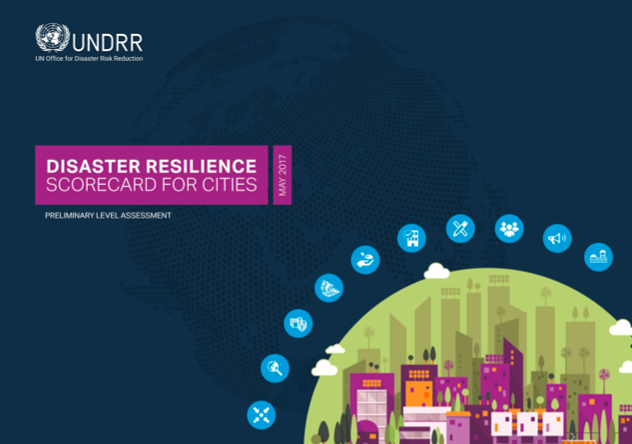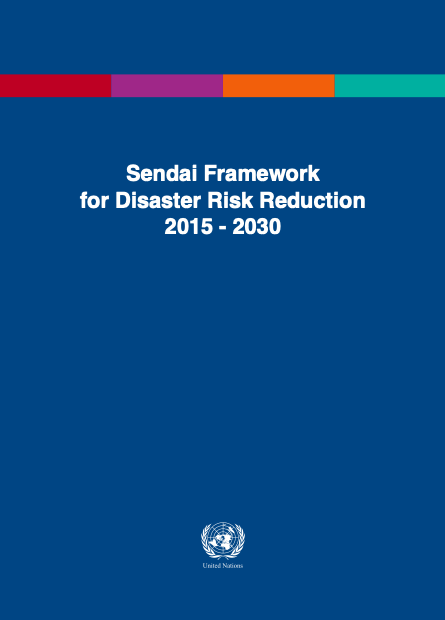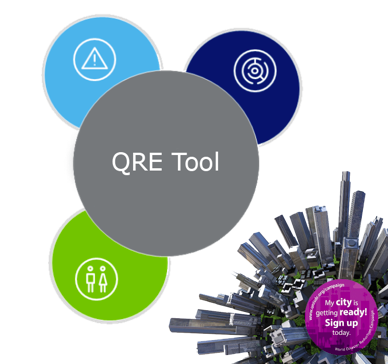Public Safety and Emergency Services
Description
Public safety concerns freedom from accidents, violence, crime, conflict, terrorism, or disasters and the ability of a community to either prevent or reduce the likelihood or adverse impacts of such occurrences. Crime and disaster response capacity are enhanced by adequate numbers of well-trained safety officers and emergency personnel, as well as emergency response planning and preparedness, adequately equipped emergency services and emergency communications. Communities require and are able to ensure appropriate speed, volume, and type of traffic, as well as the safe transport of any hazardous materials which can affect incident risk and safety.
Share this Subissue on:LinkedIn
Resources
Disaster Resilience Scorecard for Cities
This tool was created to help with disaster resilience planning. The Scorecard provides a set of assessments that allow local governments to assess their disaster resilience; helps to monitor and review progress and challenges in the implementation of the Sendai Framework for Disaster Risk Reduction: 2015-2030; and supports the baseline analysis for preparation of the disaster risk reduction and resilience strategies. The Scorecard provides both preliminary and detailed assessments, and is complemented well by the Quick Risk Estimation (QRE) Tool.
Although created for use by public officials, this resource will help change agents and business leaders to better understand the range of factors that should be considered for disaster resilience planning, and will help you to ask the right questions of government experts in the areas in which you operate.
Sendai Framework for Disaster Reduction 2015-2030
This global agreement between UN member states can help you understand the international community’s plan to reduce disasters risk and your business's role in that plan. It is a framework consisting of guiding principles and four priorities for action, including: understanding risk, strengthening governance, investing in resilience, and enhancing preparedness and recovery. It also outlines the responsibilities of different stakeholders to reduce disaster risk, including the private sector. This resource will be relevant to many departments, and especially to enterprise risk and sustainability teams.
Quick Risk Estimation (QRE)
This tool from the United Nations Office for Disaster Risk Reduction (UNDRR) can help you to identify and understand current and future risks, stressors, and other threats to human and physical assets in the area where you operate. Using a multi-stakeholder engagement process, as well as the hazards classifications outlined by the UNDRR, the tool provides a dashboard-style risk assessment to highlight primary and associated perils based on user input.
Human rights due diligence in conflict-affected settings
This comprehensive resource from International Alert can help companies operating in conflict-affected areas improve their human rights due diligence (HRDD). It addresses why conflict-sensitivity matters, how to get started designing HRDD, how to assess conflict-related risks and their impacts on human rights, and how to take action. It includes practical examples, case studies, questions, self-assessments, and signposts throughout to help you operationalise conflict sensitivity principles. This practical guidance is most relevant to those involved in project-level due diligence activities, and particularly within the extractives sector.
Good Practice Handbook: Use of Security Forces: Assessing and Managing Risks and Impacts
This guide from the International Finance Corporation (IFC) provides practical, project-level guidance that can help you to better understand and implement the requirements of Performance Standard Four from the IFC's 2012 Sustainability Framework. The guide is divided into five sections: assessing risk, managing private security, managing the relationship with public security, preparing a security management plan, and assessing allegations or incidents related to security personnel. The guide also includes a range of tools and templates, including guidance for drafting a security management plan and a sample incident report summary template. This resource will be especially useful to risk management professionals and operations managers responsible projects and facilities located in emerging markets.




